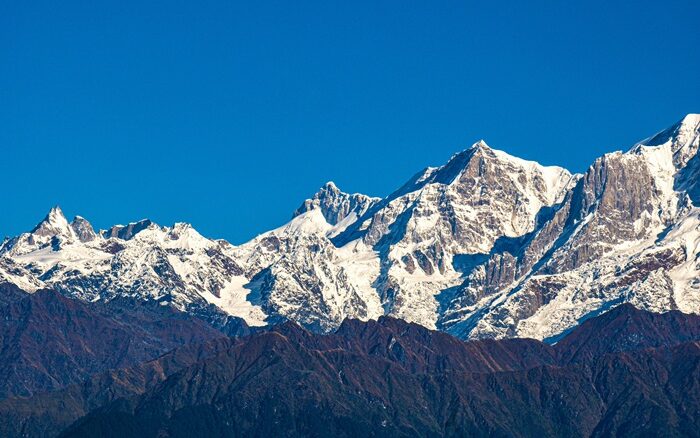
Can You See the World’s Tallest Peak, Mt. Everest, From a Plane? Experience the Thrill of Viewing the Majestic Himalayas from the Sky
Introduction to Mt. Everest
Can you see the world’s tallest peak, Mt. Everest, from a plane? This question fascinates travellers and adventurers across the globe — and the answer is both thrilling and inspiring. Mount Everest, known as Sagarmatha in Nepali and Chomolungma in Tibetan, is the highest mountain on Earth, rising to 8,848.86 metres (29,031.7 feet) above sea level. Situated on the border between Nepal and the Tibet Autonomous Region of China, this majestic peak continues to capture the imagination of those who dream of witnessing nature’s greatest spectacle.
For centuries, Everest has symbolised human endurance, exploration, and reverence for nature. The Sherpa people, who live in the Himalayan foothills, consider it sacred and an integral part of their cultural and spiritual identity. As one of the most recognised landmarks in the world, Mt. Everest not only represents physical challenge but also the deep allure of discovery and awe-inspiring beauty.
The Geography of the Himalayas
The Himalayas, stretching across Nepal, India, Bhutan, China, and Pakistan, are home to the world’s tallest peaks, including Mt. Everest. This mighty range extends over 2,400 kilometres, forming a natural barrier between the Indian subcontinent and the Tibetan Plateau. The region’s geography features soaring snow-capped mountains, glacial valleys, and alpine meadows, making it one of the most extraordinary landscapes on the planet.
Everest, located in the Mahalangur Himal sub-range, stands as a shining testament to the grandeur of these mountains. Its surrounding peaks — Lhotse, Nuptse, and Makalu — create a breathtaking skyline that dominates the horizon and forms one of the most stunning vistas visible from the skies.
Air Travel and Sightseeing: Seeing Mt. Everest from a Plane
With modern aviation, travellers no longer need to be mountaineers to experience the majesty of Everest. Air travel offers a spectacular opportunity to see the world’s tallest peak, Mt. Everest, from a plane, often in ways that few can imagine.
Commercial flights operating in and out of Kathmandu occasionally provide glimpses of Everest, particularly on routes to cities like Paro, Delhi, or Lhasa. Passengers seated on the right-hand side of the aircraft often enjoy sweeping views of the Himalayan range when the weather is clear.
For a more immersive experience, scenic mountain flights from Kathmandu — offered by airlines like Buddha Air, Yeti Airlines, and Shree Airlines — are specifically designed to showcase Everest from the air. These flights typically cruise at altitudes of 22,000 to 25,000 feet, ensuring an up-close view of Everest and neighbouring peaks. Pilots often provide commentary as passengers marvel at the mountain’s breathtaking scale and beauty.
Factors Influencing Visibility
Seeing Everest from a plane depends largely on three factors — weather conditions, flight altitude, and flight path. Clear skies are crucial for optimal visibility, as dense clouds or fog can obscure the view. Spring (March to May) and autumn (September to November) are ideal seasons when visibility is at its best.
Commercial aircraft cruising at 30,000–40,000 feet may pass near the Himalayas but are sometimes too high or off-course for a clear view. Meanwhile, dedicated mountain flights maintain altitudes that maximise visibility without compromising safety. Checking weather updates and choosing morning flights can significantly improve your chances of spotting Everest.
Best Routes for Viewing Mt. Everest
If you want the best chance to see the world’s tallest peak, Mt. Everest, from a plane, consider booking flights departing from Kathmandu’s Tribhuvan International Airport. Scenic flights lasting about an hour offer the closest and most reliable views. Airlines like Buddha Air and Yeti Airlines ensure every passenger has a window seat, and even provide certificates commemorating the experience.
Alternatively, charter flights and helicopter tours provide more personalised adventures, allowing you to fly closer to the mountain range and capture once-in-a-lifetime photographs.
Photography Tips
To capture the perfect shot of Mt. Everest from the air:
Choose a window seat (right-hand side from Kathmandu).
Fly early morning when light is soft and skies are clear.
Use a fast shutter speed (1/1000 or faster) to avoid motion blur.
Employ polarising filters to reduce glare and enhance contrast.
Include nearby peaks for context and scale in your composition.
The Magic of Seeing Mt. Everest from Above
Travellers who have seen Mt. Everest from a plane often describe it as one of the most humbling experiences of their lives. Watching the snow-clad summit pierce through the clouds evokes awe, reverence, and a deep connection to nature’s power. Whether it’s a fleeting glimpse from a commercial flight or a dedicated mountain flight circling the peak, the moment is unforgettable.
Conclusion: A View Worth Chasing
So, can you see the world’s tallest peak, Mt. Everest, from a plane? Absolutely — and it’s one of the most extraordinary aerial experiences available on Earth. Viewing Everest from above not only offers a majestic perspective of the Himalayas but also embodies the human desire to explore and marvel at the wonders of our planet.
For those unable to trek to Everest Base Camp, seeing it from the sky is a breathtaking alternative — a moment where nature, adventure, and imagination converge at 8,848 metres above sea level.

